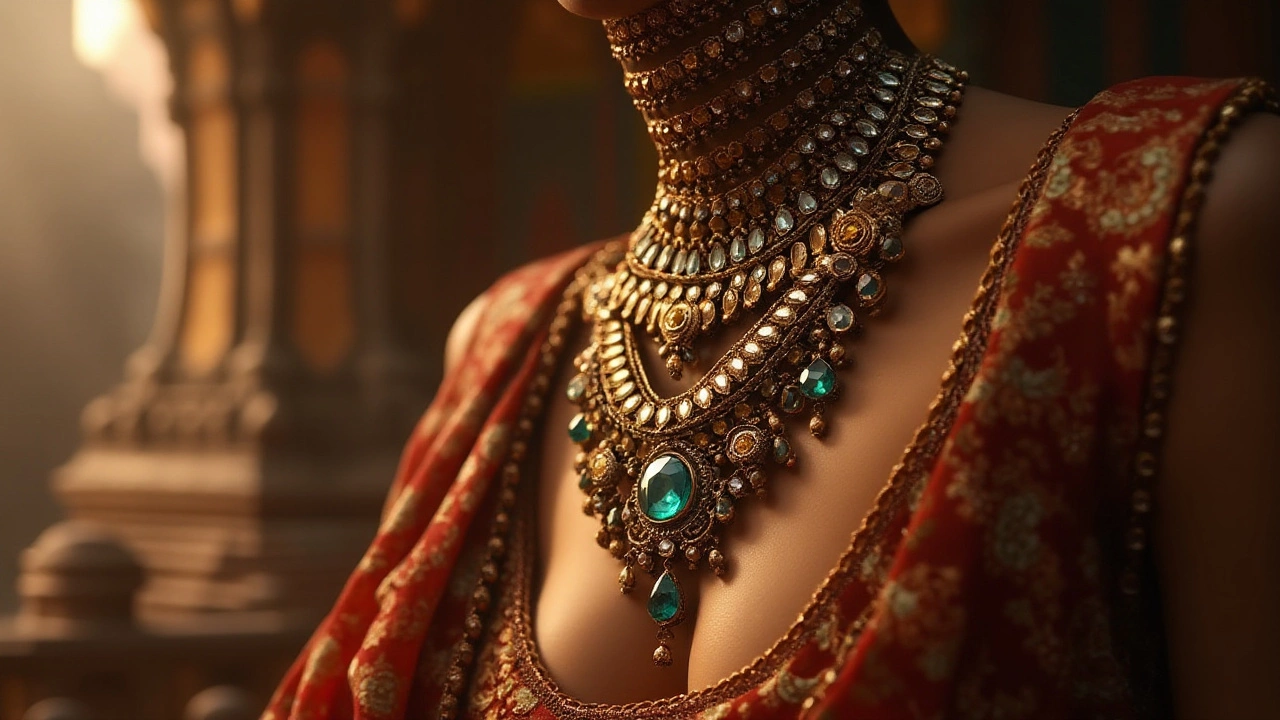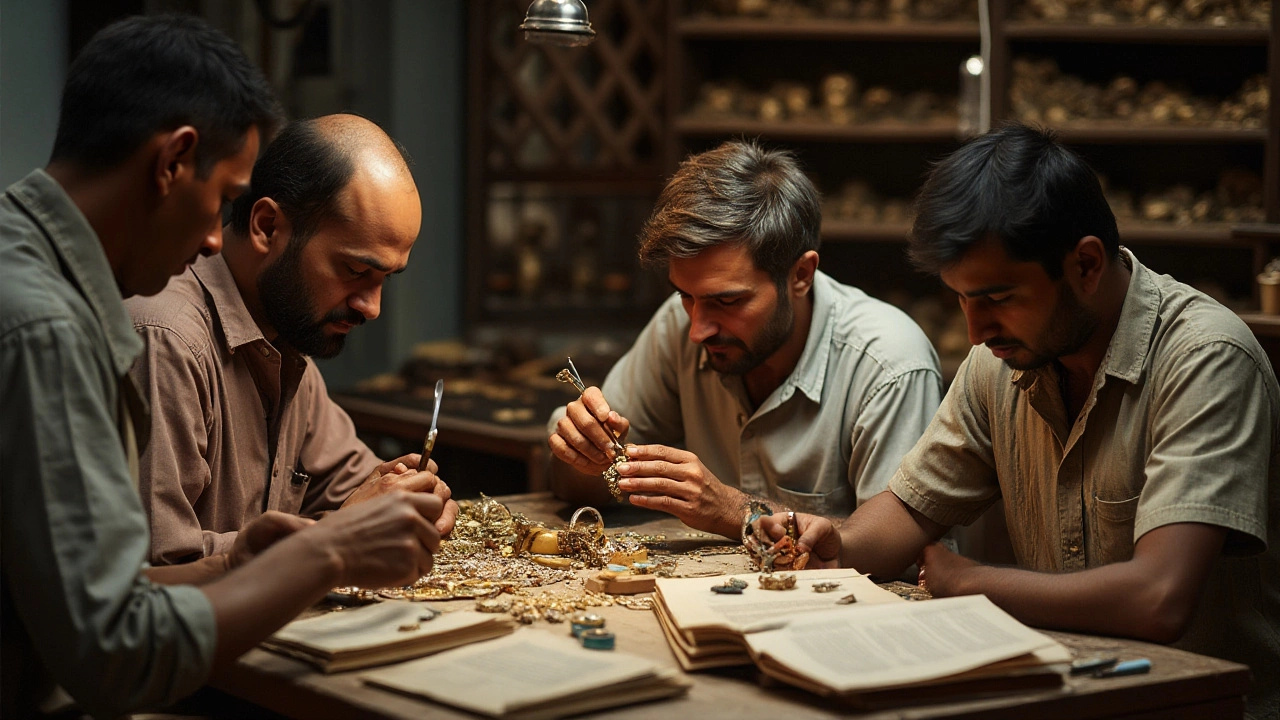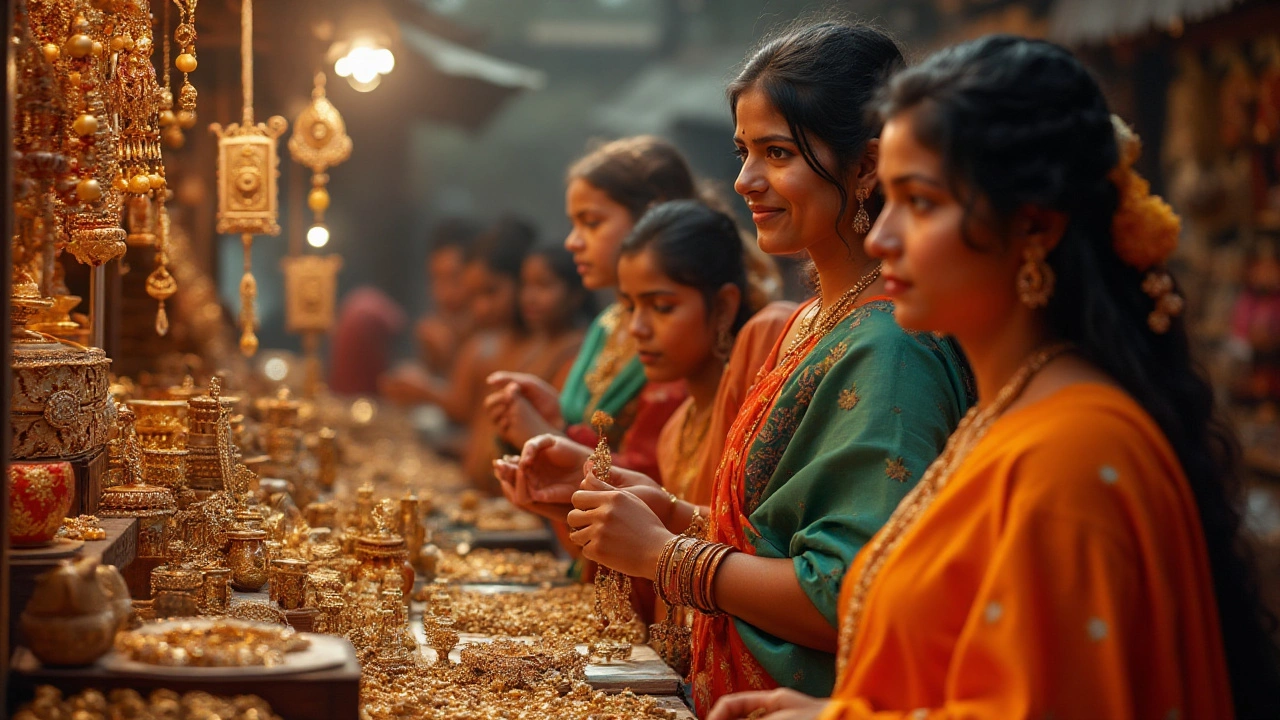
The charm of antique jewelry lies not just in its beauty, but in the stories each piece carries—stories of bygone eras and whispers of the hands through which they've passed. As a collector or enthusiast, understanding when a piece of jewelry truly becomes 'antique' can be as important as the design itself.
Jewelry is typically considered antique when it reaches an age of 100 years or more. However, the appreciation of these pieces goes beyond the ticking of the clock; it involves understanding their historical context, discerning their craftsmanship, and recognizing their impact over time.
In this guide, we'll explore the nuances that define antique jewelry, the evolution of styles, and how provenance and condition play a pivotal role in their value. Whether you're a seasoned collector or a curious novice, knowing these elements can transform your appreciation of these timeless treasures.
- Defining Antique Jewelry
- Historical Criteria and Identification
- Evolving Styles and Designs
- Provenance and Value
Defining Antique Jewelry
Diving into the delightful realm of antique jewelry requires an appreciation for history and craftsmanship, where past narratives are intricately intertwined with aesthetics. But when does a piece of jewelry cross the threshold from merely old to truly antique? Conventionally, jewelry is deemed antique when it surpasses the 100-year mark. This milestone, however, is more than just a number—it represents an era of craftsmanship that harks back to times when artisans meticulously hand-crafted each item, capturing not only artistry but also the cultural essence of their periods.
Understanding the distinction between antique and vintage is crucial for any collector. While the term 'vintage' describes pieces aged about 20 to 99 years, 'antique' is reserved for items over one century old. This classification is vital since it influences both the historical value and the market worth of the jewelry. As the hustle and bustle of modern jewelry creation continue to digitize and mechanize processes, the allure of antique pieces lies in their rich histories and the tales they tell of those who wore them before. An old Victorian brooch, for instance, might have adorned the collar of someone attending a royal event or seen pivotal moments from history.
Among experts, there is often debate about categorization, but the 100-year rule holds substantial credence. An interesting note from a Sotheby’s auctioneer once highlighted,
"True antiques aren't just defined by their age, but by the stories whispered through the minute engravings and patina that only time can impart."This underscores the importance of appreciating the journey of a piece, beyond its chronological age. Collectors find joy in unearthing the narrative layers embedded within gemstones, settings, and designs.
| Type | Years Old |
|---|---|
| Antique | 100 years+ |
| Vintage | 20-99 years |
| Modern | Less than 20 years |
Further enhancing this fascination is the uniqueness inherent in antique jewelry designs, often attributed to the historical period they originate from. The Edwardian era, for instance, is characterized by its use of platinum and intricate filigree, while the Georgian era is known for its hand-cut stones and the elaborate use of gold. Thus, recognizing an antique piece involves not only understanding its age but situating it within its historical and stylistic context.

Historical Criteria and Identification
Identifying whether a piece of jewelry can be labeled as antique involves more than just checking its age. The historical criteria play a significant role in determining the authenticity and the intrinsic value of these gems. Collectors often seek jewelry that not only fulfills the age requirement but also encapsulates the essence and style of its era. This means that true antique jewelry must reflect the design, materials, and craftsmanship typical of the period in which it was created. Every era—from the opulence of the Victorian age to the artistic flair of the Art Deco period—has its distinct hallmark characteristics.
One fundamental approach to identifying antique jewelry is through hallmark examination. Hallmarks are small marks stamped onto the jewelry to indicate the metal content or origin and can be critical in determining age. For instance, English pieces often display hallmarks indicating the place and year of manufacture, serving as veritable 'time stamps' of authenticity.
"The hallmark is the passport of a piece of jewelry, guiding us through its storied past," says renowned jewelry historian Vivienne Becker.
When evaluating pieces for historical accuracy, experts emphasize the examination of craftsmanship. During the Georgian era, for example, jewelry was predominantly handcrafted, resulting in subtle imperfections that are cherished as signs of authenticity. On the other hand, the mass production techniques that started emerging during the Industrial Revolution provide contrastingly different patterns and motifs. These transitions in jewelry-making techniques are as relevant to age determination as the physical hallmarks are.
It is critical to consider the social and cultural influences of the time when identifying a piece's historical importance. Jewelry from the Edwardian era might feature light and airy filigree work, reflecting the romanticism of that time, while pieces from the mid-20th century post-war generation often showcase more modernist, bold designs.
The Role of Provenance
The provenance, or documented history of ownership, considerably adds to a piece's historical narrative and value. Sometimes, a dealer will uncover promising clues in old photographs or family histories, linking beautiful heirlooms with notable personalities or events in history. This not only amplifies a piece's monetary value but also its emotional and historical significance. Provenance can turn an already impressive piece of jewelry into an irreplaceable artifact, cherished not just for its aesthetic appeal but for its place in history.

Evolving Styles and Designs
Jewelry has always been an expression of style and personality, shaped by the cultural and societal influences of its time. As we journey through the centuries, one can witness an ever-changing tapestry of design preferences and techniques that capture the essence of each era. From the intricate filigree work of the Victorian period to the bold geometric designs of Art Deco, each style tells its own story.
One of the most significant influences on antique jewelry age and style has been the availability of materials. The Georgian era, for example, embraced the luster of natural pearls and diamonds set in intricate metalwork, reflecting both the natural world and the hierarchical society of the time. The Victorian era brought with it innovations such as electroplating and mass manufacturing, making jewelry more accessible to the broader public. During this time, Queen Victoria herself played a pivotal role, as her own love for vivid gemstones and romantic motifs helped popularize them across the continent.
Moving into the 20th century, the Art Deco period marked a radical departure from previous styles, embracing symmetry, bold colors, and the allure of exoticism. This era, spanning the Roaring Twenties through to the Great Depression, was marked by a fascination with modernity and progress. Jewelry from this time often featured clean lines and geometric shapes, drawing inspiration from the art and architecture of the day. This was a time when platinum became a prominent feature in settings, due to its strength and ability to hold delicate designs.
Traditions from around the world have also left their mark on antique designs. For instance, ancient Egyptian motifs such as the scarab and lotus were revived in multiple eras, leading to a fascinating blend of past and present. Asian influences also emerged in various forms, from the use of jade and coral in jewelry to intricate enamel work inspired by Chinese cloisonné techniques.
As collectors and enthusiasts, recognizing these evolving styles helps in understanding how and why certain pieces hold value and significance. The provenance and crafting techniques speak volumes about the history of each piece, and knowing these details enriches the collection journey. They remind us that, while trends come and go, the stories embedded within these pieces make them timeless gems worth preserving.
"The evolution of jewelry isn't just about changing styles; it's a reflection of human history and personal expression, pressed into precious metals and stones." – Dr. Claire Thompson, renowned historian of jewelry art.
The flow of design evolution in jewelry is like a river, sometimes meandering and sometimes rushing forward, but always carrying with it a piece of the past. These unique blends of artistry and history make exploring and collecting jewelry a deeply rewarding pursuit.

Provenance and Value
When it comes to antique jewelry, the tale of its origin can sometimes carry as much weight as the shimmering gem itself. Provenance refers to the history of the piece—where it originated, its journey through time, and the noteworthy hands it may have adorned. Recognizing the importance of provenance can significantly enhance the allure and value of an antique piece. For example, a ring that belonged to a member of nobility or a renowned historical figure holds more than just aesthetic appeal; it carries a rich narrative that collectors and enthusiasts find irresistible.
Unveiling the provenance begins with detailed documentation, which might include original sales receipts, photographs depicting the jewelry in use by its previous owners, or accompanying letters and correspondences detailing its background. These historical breadcrumbs not only authenticate the piece but they can also introduce a narrative that enriches its value exponentially. It's the equivalent of holding a tangible piece of history, an artifact of a bygone era. Many collectors relish a detailed backstory and are willing to go to great lengths, sometimes seeking out family archives or scouring estate sale records to piece together this fascinating puzzle.
Consider the significance of a simple tiara. One might be part of a royal inheritance, passed down through generations, with tales of grandiose balls and clandestine meetings whispered through its delicate prongs. Another, without such a history, even if visually similar and equally ornate, would not command the same financial admiration. As quoted by Elizabeth Taylor, a renowned collector herself, "Jewelry has the power to be the one little thing that makes you feel unique." This uniqueness is amplified by a storied past, linking us emotionally to different times and places.
When determining the real value of an antique jewelry piece, it's essential to consider not only its historical background but also its condition. While age inherently brings about wear in any artifact, pieces that have been well-maintained, or those demonstrating exceptional craftsmanship, undeniably fetch a premium. Expert restoration can revitalize a piece to its former glory, but purists often value unaltered, pristine conditions above all. Not to mention, particular periods—such as Edwardian or Art Deco—are intrinsically valued for their distinct designs and techniques.
Provenance, condition, and period origin each contribute layers to the value hierarchy of antique jewelry age. Understanding these elements ensures that, as collectors or occasional buyers, we are making informed decisions. This consciousness not only ushers in a treasure trove of historical knowledge but serves as a wise financial investment. As you delve into the expansive and intricately woven domain of antique jewelry, remember—the beauty lies not just in the gleam of precious stones but in the history those stones have borne witness to, and the stories they silently tell.


